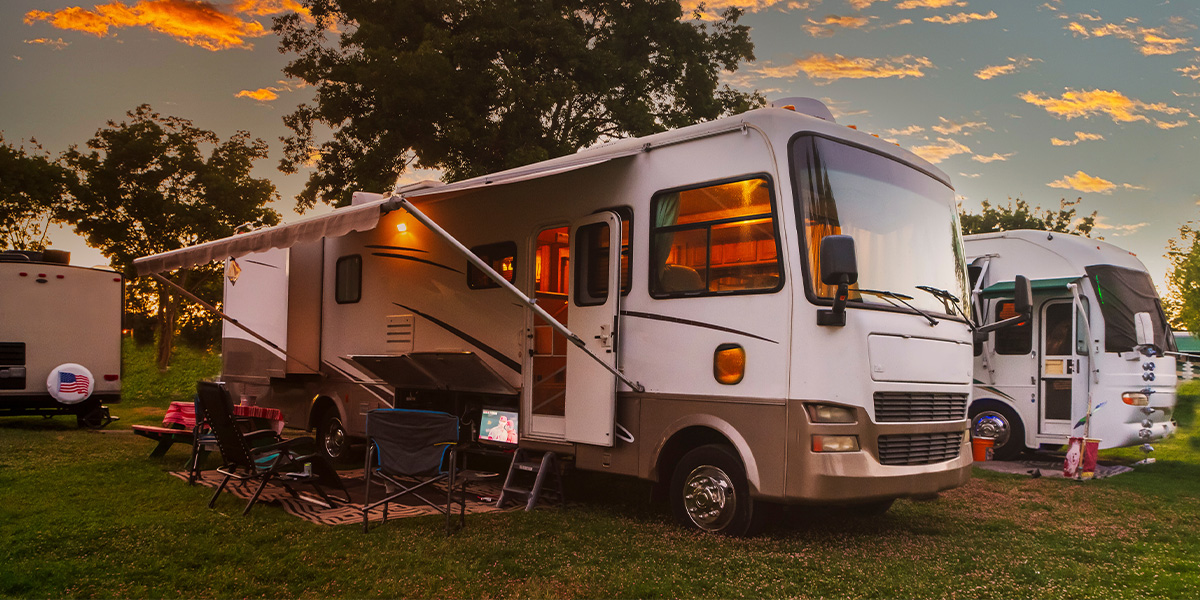More than ever, people are packing up their RVs and hitting the road for a camping getaway. RV camping is a great way to explore the country and experience the great outdoors while enjoying some of the comforts of home. Before you load up your camping trailer or motorhome, there are some details to sort out first. To break it down, RV Trader has six steps for planning an RV camping trip.
1. Figure Out Where You Want to Go
RV camping allows you to travel anywhere accessible by vehicle. With so many options, it might be hard deciding where to go. There are a few factors to consider when determining where you want to travel in your RV:
- Time of year
- Scenery
- Activities
- Travel companions
- Local events
- Budget
Planning where you’ll travel for an RV camping trip isn’t just about the destination, you also have to think about what type of camping experience you want to have. Do you want all the amenities of a full-hookup RV resort, or are you okay with something more rustic? If you’re looking to save money, boondocking allows you to park at a public area, without hookups, for free.
2. Decide When You Want to Travel
RV camping can be a year-round activity. The ability to sleep comfortably in your camper allows you to endure both cold weather and the summer heat. While you can travel anytime throughout the year, when you go on your RV camping trip could depend on your destination.
National parks are popular spots for RV camping. However, if you don’t want to deal with busy crowds, it’s best to avoid the peak tourist season, which is typically during spring and summer.
You should also consider what type of attractions and activities you want to visit and do during your trip. If you’re traveling for winter sports, you’ll want to plan around peak snowfall. Or, if you want to spend your days camping near a beach, you should aim for the warmer months that are great for lounging in the sand and splashing in the waves.
3. Make Campground Reservations Early
Even if you don’t have the exact date of your camping trip locked down, you can still look at campground and RV park reservations. Reservations at most campgrounds can be made months in advance and, if you’re traveling during a peak season, you should make them as soon as possible.
Reservations can fill quickly, especially if you’re staying near a popular attraction. Having flexible dates gives you more options for booking. If your ideal travel date and campground is booked, check the reservation site regularly for any cancellations.
4. Make Sure Your Camper Will Fit
Before you click “submit payment” on your reservation, make sure the campground can accommodate your motorhome or fifth wheel. Many campgrounds, especially at national parks, are designed to host smaller rigs and tent campers. Be sure to check the campground or RV park’s website before you book to make sure there will be room for your rig, as well as a tow vehicle.
In addition to fitting in the campground, you should also make sure your RV can navigate the other attractions you plan to visit. Will your Class A motorhome be able to maneuver narrow roads and tight turns? Will you have to unhitch your travel trailer and just drive your tow vehicle? Some campgrounds offer shuttle service to and from popular attractions, so you won’t have to worry about transportation and moving your RV.
5. Make Your Packing List
It’s never too early to make your packing list. This is a good time to figure out what travel items you already have and what you’ll need to buy before your trip. If you’re traveling with children or pets, make sure you have activities to keep them busy as you rumble down the road in your RV. Check out our resource page for more tips on RVing with pets.
As you make your packing list, you should also start thinking about how you want to prepare meals on your camping trip. If you don’t want to do all of your cooking in your camper’s kitchen, you can also use a smokeless portable fire pit—one of our must-have camping gadgets.
6. Get Your RV Ready
Before you hit the road, make sure your RV is ready for adventure. Perform any routine maintenance and be sure your insurance and inspection are up to date. If you’re taking your RV out of storage for the first time, you may want to clean up your rig and ensure all the mechanical and electrical parts are working properly. For more tips, read our previous article on getting your RV ready for camping.
Hopefully these tips will inspire you to plan your next RV camping getaway. Once you’ve done all of your planning, you can start mentally preparing for the fun and relaxation you’ll have in the great outdoors. Need an RV to take on your camping trip? Browse the nationwide inventory of new and used models on RVTrader.com.

Leave a Reply to Pamela Morris Cancel reply